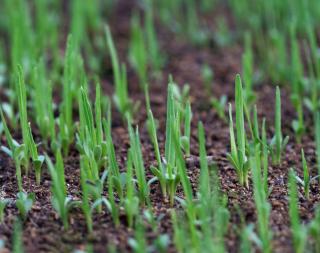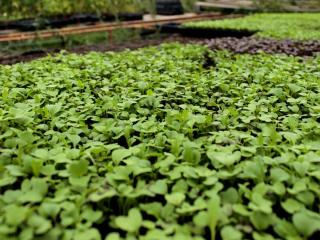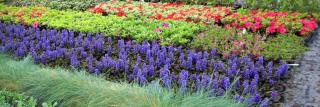

Sowing seeds in a nursery has many advantages. The greatest one is starting to grow plants in ideal conditions.
A sowing nursery is a small, well-prepared patch of soil where seeds are sown and started.
Read also:

In this little sowing patch, you prepare the soil much more carefully. Ideally, you’d have a source of water nearby, and garden tools should be stored nearby as well. Convenience is key, so setting your nursery close to the house helps, too!
As they grow larger, young plants are transplanted one or more times until they reach their final growing bed in your garden or vegetable patch.
Over time, your nursery plot will get better and better: germination rates will increase, and it’ll get easier and easier to work the soil!
It’s important to note that in the nursery, plants are much closer together than they will be later on. Upon transplanting to the growing bed, the correct distance is set so the plants can thrive without competing.
Nurseries are excellent because they help maximize what nature has to offer. Production is increased for a given plot of land and the growing season is extended. More harvests and more flowers!
You only need about one-tenth the surface of your final garden to really get things going. As soon as seedlings have grown enough, you transfer them to their growing bed and the sowing space becomes available to start later crops.

Thanks to the nursery, the same plot produces two or more harvests!
Less weeding! Indeed, you only have to prepare a smaller plot initially. Higher sowing density of your target plants means they crowd out other types of weeds without much effort.
Also, watering is easier since, at this stage, the surface you need to cover is smaller.
Overall, working on a smaller surface at the beginning makes it easier to manage. It’ll give you time to prepare the final growing beds without having to hurry too much.
The usual practice when sowing directly in the growing plot is to sow more seed than needed. As they sprout, you’d thin the weaker seedlings out so that remaining seedlings have enough space to grow large. This means that, in the end, only 10 or 20% of seeds actually made it to “being useful”.
When you start seedlings in a nursery, only start the number of seeds you have space for later. Since you’re transplanting them as they grow, there’s no need to thin and waste seeds!
It’s much easier to protect a smaller plot against pests and diseases, than it is a larger one. For example, a short fence will keep out deer or rabbits: setting it up on a small surface won’t cost as much. Sprouts mature safely and when comes the time to transfer, they aren’t as appealing to these nibblers.
As regards fungal diseases, it’s also more convenient to apply treatments or to prepare soil on a smaller surface. For damping off especially, the sprouting time is when plants are most vulnerable. A nursery is easier to handle and prepare than many seed holes or rows spread over a wide area.
Lastly, you can create decoy plants to attract pests to the other end of the garden. For example, nasturtium is much more appealing to aphids than anything else. Plant them in a remote corner and you’ll notice that your nursery will grow virtually unaffected. For best results, line your nursery area with pest-repelling plants such as lavender or French marigold.
It sometimes feels like more work and labor, though. Indeed, seedlings need transplanting, sometimes multiple times.
A few ideas for vegetables – celery, broccoli, cauliflower, headed cabbage, kohlrabi, ornamental cabbage, fennel, leek and chard…

For the end of the season, plant green manure in your nursery plot. In Spring, work it into the soil for maximum fertilizer and drainage!